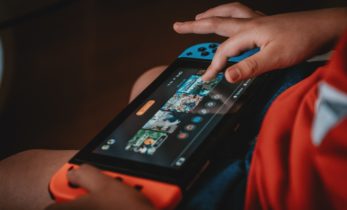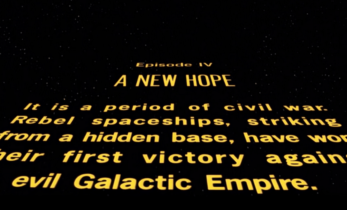Greater than 4 minutes, my friend!
Cultural Anthropology and Localizing Video Games How Culture Shapes Games & Translations
When people ask me what my degree was their response to “Social Anthropology” is normally “Oohhh… What’s that?”. To which I normally reply “Social anthropology is the study of different cultures.”
Yet social anthropology (or cultural anthropology in the US) is so much more that just culture.
Social anthropology incorporates history, current affairs, politics, economics, family, food, religion, geography, social constructs like time, etc.
It’s not just studying small ingenious cultures in the middle of Papua New Guinea, but also large communities in our own countries or on the internet.
How the local and global interact, and how everything is influenced by everything.

Anthropology is an amazing subject that teaches you so much about the complexity of the world and humans. And how to be open minded when interpreting the world around you.
And I’ve realised over the years, that anthropology plays a huge part in localising video games.
Video Games are Products of Culture
Video games are products of the culture in which they are created.
They carry with them historical, traditional, modern, political, religious, fantastical etc elements of the culture of the person/people who create the game.
For example, The Witcher 3 is a Polish game inspired by slavic and norse mythology.
One of the top selling video games in Japan is Youkai Watch, a children’s game about collecting Youkai or “spirits” which are child-friendly monsters based on Japanese folk stories.
Even the US created The Last of Us is based on the traditional Western zombie mythos, and was developed during a time when the role of women in video games was a heated discussion online, a political discussion which shaped the characters in the game.

I recently wrote about how All Games Should be Localised Like Ni no Kuni in terms of language and cultural choices to create a translation that works really, really well in English. Ni no Kuni is a game that is still influenced by the culture it originated from: the way the characters talk, are programmed to move, how they interact with each other.
Localisations of this game reflects elements of the original culture, but also displays elements of the target culture. And each localisation displays different aspects of both.
Translating/localising that culture can be difficult, and this is because of the difficult decisions translators make:
- What elements of the source culture do I maintain?
- What elements of the culture do I translate?
- What is lost/gained in these decisions?

Understanding the Anthropology of Two Cultures to Localise
Whether or not a translator has trained in anthropology, anthropology still plays a large part in the localisation of a video game.
Many translators suggest that you should have experience living in the country of the source language you’re translating from. That you should only translate into your native language. These emphasise that translators need to understand the source culture and be fluent in their target language.
Fluency in a target language of course means being able to write in a way that the text doesn’t sound translated, but to achieve this isn’t not just a matter of language, but culture, as the two are heavily intertwined.
Take British vs American English, for example. One might assume that someone brought up in the USA, who has never been to the UK, would create the same text as someone in the UK, yet there are subtle linguistic and cultural differences.
I don’t just mean “ou” instead of “o” (i.e colour vs color), but almost entirely different words. Such as the use of “acclimatise” in the UK vs “acclimate” in the US.
Or that fact that Americans will more naturally say “I’m going to the bathroom” rather than “popping off to the loo”.
And let’s not forget the wide variety of dialects in the UK and US and how those are heavily embedded in local cultures.
Intermediating Culture in Decisions Surrounding Localisation
How one intermediates culture in localisation is also dependent upon a level on understanding the target audience has of the source culture.
In the 1990’s Japanese onigiri and sushi were often re-animated and swapped for sandwiches. Although this was more prominent in anime.

But now Japanese culture is so popular in the West that things like onigiri are generally understood by the majority of the audience, and are often left in as a result.
Often in games it’s not just the language that’s localised, but how the characters are dressed, move, look and behave, and how certain scenes play out.
In Japan it’s customary to bow a lot. Yet in the localisation of Ni no Kuni this action was changed to be less prominent as it’s un-customary in Western cultures: “Even simple character animations, like the way Oliver bowed, were tweaked,” (source: wired.co.uk).
There are also localisation decisions based around different perceptions of what is appropriate to the target audience.
There has been a long practice of the US editing Japanese games to suit a younger audience. Such as covering scantly dressed characters or removing racy costumes or features altogether. A highly debated topic online about censorship.
Then again Japanese companies have localised US games in a similar fashion to suit their target audience. Such as the toning down or removing violent images and scenes, or references to atomic bombs.

Summary
Not all of the source culture in games are sacrificed or completely edited when localised into a target culture.
Every company is different. The decisions made are often made after great deliberation and discussions between script writers, translators, editors etc.
No decision is ever made lightly, yet the battle for maintaining or changing the source culture goes on.
Either way a great understanding of the socio-political contexts a game is created in and localised into are required to aid in these decisions.
In other words, a good understanding of anthropology can go a long way.
Further Reading:
Legends of Localization is a great series that looks at the official and fan translations of classic Japanese games, the decisions behind them and the implications.
They also have a book out which is all about the localisation of the original Zelda games. Well worth a read if you’re interested in game localisation.
Relevant J-EN Translations Articles:
Shaping Game Lore through Localization
The Beautiful Translation of Final Fantasy XV
Translating Japanese Video Games – Ikinari Maou





I had never realized anthropology could play such a crucial role. It suddenly looks like a very useful subject for a translator’s CPD 🙂